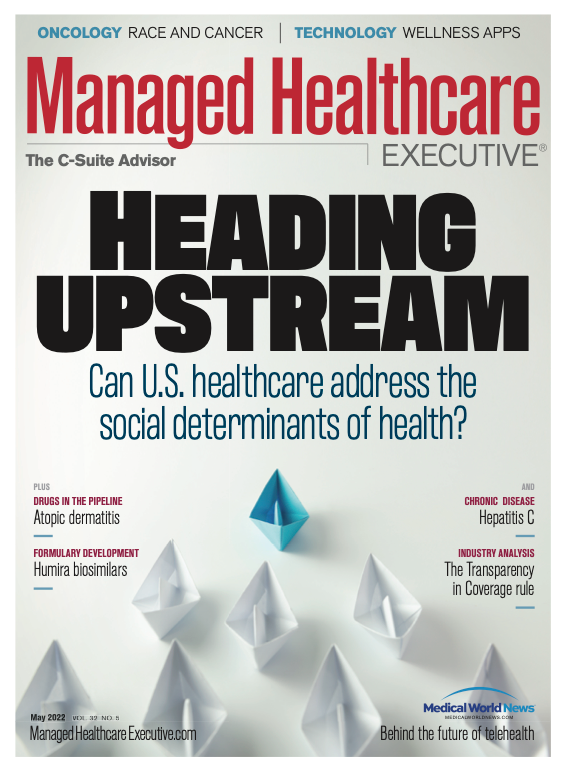Health Plans Prepare to Post Prices for Consumers
Price-transparency rule allows insurers to cut MLR payments by using incentives to encourage consumers to choose low-cost, high-value providers.
On July 1, Brian Walsh, account executive with the price transparency company Turquoise Health, will be watching closely to see which health insurers publish the rates they pay hospitals, physicians and other healthcare providers.
Having consulted with many of the nation’s small and midsize health insurers, Walsh is confident that most — if not all — of the insurers he’s talked to are preparing to comply with the new federal transparency rule. How many health plans will comply with the Transparency in Coverage final rule will be fascinating enough. But health insurers and observers of the industry will also be keeping an eye on how health insurers use a new financial tool built into the rule that is designed to encourage consumers to choose high-value, low-cost hospitals, physicians and other healthcare providers.
Under the rule, HHS will also allow health insurers to use incentives, such as by waiving or lowering co-payments or deductibles, to encourage their members to shop for services from lower-cost, higher-value providers. When they use such incentives, health plans will be able to give enrollees a part of the savings when their enrollees get services from lower-cost, higher-value consumers, according to CMS. Moreover, they can include the savings they share with enrollees in the numerator of their medical-loss ratios (MLR), along with incurred claims and other expenses related to improving healthcare. In this way, HHS allows insurers to reduce what they would pay in rebates under the MLR rules.
Since the MLR rules went into effect under the Affordable Care Act (ACA) in 2014, health insurers have paid millions in rebates to consumers. Industry observers say insurers are likely to welcome the chance to reduce what they pay under the MLR rules while encouraging consumers to choose lower-cost and higher-value hospitals and providers.
One problem: How will health plans define high-value providers? Choosing value in healthcare is challenging because it’s often in the eye of the beholder, according to A. Mark Fendrick, M.D., director of the University of Michigan Center for Value-Based Insurance Design. The challenge in defining value, says Fendrick, is that quality is linked to what the consumer pays. “Value is the combination of the quality of care you get for the price you pay,” Fendrick explains. “It’s best described as a fraction of value over price.” Some consumers will choose the lowest-cost hospitals, physicians and providers, while others may choose hospitals and providers based on the quality they deliver or a combination of higher quality and lower price, Fendrick says.
As of Jan. 1, HHS has required hospitals to post what they charge for their care and services under the Hospital Price Transparency final rule. But for Fendrick, the Transparency in Coverage rule is more significant because consumers, researchers and other insurers will be able to see what their competitors pay.
“Transparency across plans means there will be more competition and maybe less variation in what they pay,” says Fendrick.
The rule applies to most health insurers that were not grandfathered in under the ACA and to health plans offering nongrandfathered health insurance coverage in the individual and group markets. HHS defines a grandfathered plan as one that someone purchased on or before March 23, 2010, which is when the ACA was signed into law. These plans are not sold on the ACA exchanges; instead, insurers or their agents market them to consumers.
Insurers will need to make public machine-readable files showing what they pay for all covered items and services to in-network providers and the allowed amounts they pay and the billed charges they get from out-of-network providers.
Hospitals will also need to provide a price-comparison tool on the internet that will allow individuals to get an estimate of what they would pay out of pocket for a specific item or service from a named provider or group of providers, for 500 shoppable items and services.
Upon request by consumers, insurers also would be required to make this price-comparison information available, HHS said. Failing to provide this information will result in fines of $100 per day for each violation or for each affected individual.
Joseph Burns is an independent journalist in Brewster, Massachusetts, who covers healthcare and health insurance.

Premiums for Employer-based Health Insurance Increased by 7% in 2024, Says KFF Report
Published: October 9th 2024 | Updated: October 9th 2024The 2024 increase is the same as last year's increase for family coverage. The foundation’s annual survey of employer health benefits also found that only 18% of large employers (200 employees are more) are covering the GLP-1 weight loss drugs.
Read More
Doug Chaet of Value Evolutions Discusses Value-based Payment Models, Where They Stand and More
September 29th 2022In this episode of Tuning In to the C-Suite, Managing Editor of Managed Healthcare Executive, Peter Wehrwein, speaks with President of Value Evolutions and MHE Editorial Advisory Board Member, Doug Chaet, FACHE, about value-based care's current standing, the status of select payment models like bundled and episodic, and more.
Listen
Florida Gets the OK. But Will Drug Importation from Canada Actually Happen?
March 5th 2024Canadian health officials warn that maintaining a drug supply for Canadians is their priority. The staunch opposition of the U.S. pharmaceutical industry may also be an obstacle to imports from north of the border.
Read More
We conducted our annual State of the Industry survey in the early part of November 2023. The survey had 432 respondents, of whom 56% self-reported working for a payer organization (pharmacy benefit manager, insurer or self-insured employer), 34% for a provider organization and the remainder for government or an unspecified “other” category.
Read More